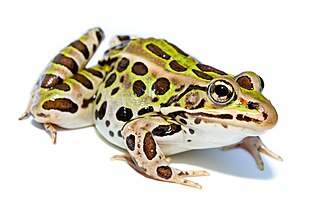BY LETTER
Animal
Strictly speaking, any member of a major group of related Old Earth organisms that are multicellular, eukaryotic, and motile at some or all stages of life.
More broadly, any similar biological organism, Terragen or otherwise, and natural or otherwise. Animal-like aliens, animal-like neogens, and animal-like synanoborg or cyborg organisms are often called animals, even though they are not members of the Terragen Animal Kingdom. Some xenologists and biologists prefer to reserve the term "animal" exclusively for Terragen species, while others will extend it to cover similar xenobionts with a water-based and oxygen-breathing biochemistry but exclude life forms that are otherwise animal-like but show some other form of xenobiochemistry. In such cases they typically invent alternative terms. There are similar disagreements regarding the nomenclature for sentient but subsophont neogen, synano, and cyborg organisms that resemble natural Terragen animals.
Inorganic beings like bots or subturing AIs sometimes resemble animals quite closely, and some are deliberately designed to do so in order to appear familiar. Many robotic 'pets' and companions are covered in fur or skin to make them more appealing, especially to children.
In popular usage, sophonts such as humans or provolves are generally considered to be at a level above subsophont animals, even though they do not differ biologically from their relatives.
Most Terragen animals have complex tissues, and embryological development that leads to organs or even organ systems. Though a typical animal has a worm-like morphotype and is a few millimetres long, even these "worms" have some extraordinary variety in their internal anatomy, and animals generally show a wider range of shapes than any other Old Earth phylum. They might be as simple as sponges and placozoans or as complex as vertebrates; they might be sessile or motile; they might be subterranean, aquatic, terrestrial or airborne; they range in size from microscopic rotifers, tardigrades and nematodes consisting of a few hundred cells to cetaceans or sauropods weighing a hundred tons or more, and they range in intellectual capacity from subsentient forms without any nervous system at all to primates, cetaceans, corvids, parrots, and proboscideans. Animals first became common on Old Earth at the beginning of the Cambrian, and have been important in their biosphere ever since.
A typical animal's lifestyle involves seeking out food to ingest; food that may itself be another organism that actively avoids this fate. As a result, animal species often evolve sophisticated sensory organs for detecting their food, extensive musculature and an nervous systems that allow them to search widely and efficiently for their food and capture it if necessary, and a brain sufficient to process the internal and external information for these tasks. For these reasons the most intelligent life forms both on Old Earth and on other garden-worlds are almost always animals. According to some xenobiologists and paleoxenobiologists, fully five percent of those naturally evolved garden-worlds able to support large animals will produce sophont or near-sophont life forms at some point in their history.
Related Articles
- Ammonite
- Annelid
- Arachnid
- Arthropod
- Bird
- Cetacea
- Copepod - Text by M. Alan Kazlev
Tiny shrimp-like crustaceans; some types such as krill are an important food-source for many baleen whales and other marine animals. They are a a major constituent of Terragen zooplankton, and an important source of protein for the whale provolves of Oro Mistral and Pacifica. - Coral - Text by M. Alan Kazlev and Stephen Inniss
Terragen marine metazoan animals, class Anthozoa, phylum Cnidaria. Though some are solitary, a typical coral is a colony of genetically identical polyps, each of which secretes calcium carbonate at its base to create a common skeleton with a characteristic structure. They are often brightly colored when alive, but after death of the polyp the color fades and becomes a bleached white. The best known and most numerous types of corals derive much of their sustenance from symbiotic photosynthetic algae. Because of this these are limited to regions of sunny shallow water and low nutrient flow, where bright light reaches the ocean floor. Such corals are an important element of many phototrophic tropical ocean biospheres. - Crab
- Crustacean
- Dinosaur
- Electrogenic Fish
- Elephant
- Fish - Text by M. Alan Kazlev
[1] Polyphyletic taxon; aquatic non-tetrapod Terragen vertebrates, usually though not necessarily with paired fins and with scales. An important component of most Terragen aquatic ecosystems. There have been several successful fish provolves, especially since the Age of Consolidation. However most fishes are subsapient sentient animals.
[2] More generally, alifes, bioships, and xenobiota of fish-like morphotype. - Insect
- Labyrinthodont
- Mammal
- Marsupial
- Molluscs
- Nematode, Nematoda
- Pterosaur - Text by M. Alan Kazlev
Flying archosaurian reptile, native to the Mesozoic era of Old Earth. A number of actual and neogenous species have been lazurogened. The so-called "Pteranodon People" are actually pterosaur-human neogens, rather than true lazurogenic pterosaurs. - Sauropod
- Vertebrate
Appears in Topics
Development Notes
Text by Stephen Inniss
based on the original by M. Alan Kazlev
Initially published on 18 March 2009.
Frog image from Wikimedia Commons - copyright info here
https://commons.wikimedia.org/wiki/File:Lithobates_pipiens.jpg
based on the original by M. Alan Kazlev
Initially published on 18 March 2009.
Frog image from Wikimedia Commons - copyright info here
https://commons.wikimedia.org/wiki/File:Lithobates_pipiens.jpg







